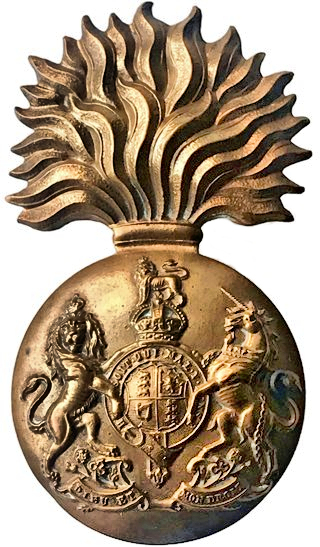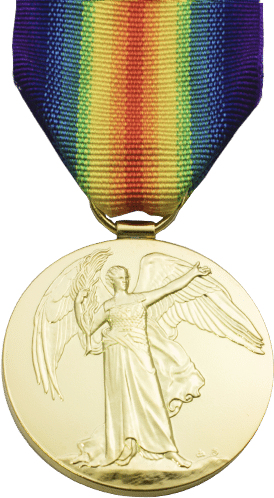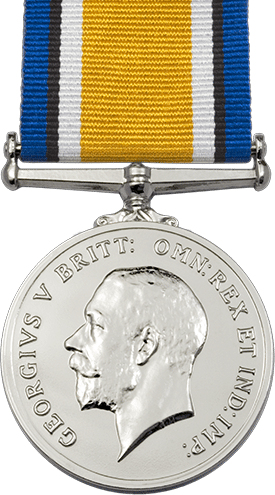Ralph Thomas Kendall, Age 30
Private, 8011, 1st Battalion, Royal Scots Fusiliers.

Royal Scots Fusiliers Cap Badge.
Once more I have come across a dilemma with Ralph and his connection with the Dawley District. His name appears on the local Memorials at the Dawley rest rooms and also in the Parish church but I cannot pinpoint him to Dawley exactly although he had definite links to the surrounding area.
His parents were Thomas and Sarah Ann Kendall and Ralph at the time he joined up was living at 25 Crackley Bank, Shifnal with his wife Katherine (nee Briscoe), Who he had married in 1911. He had worked as a young man as a China gilder at Coalport, but that is all that I could find out.
Ralph was killed in action on the 1st July 1915 and is buried at the Wimereux Communal Cemetery in Grave I.J.5A
This must be the RT. Kendall on the Dawley Memorials because no one else with that name is listed on the CWGC and Soldiers Died sites.
Extra info
Ralph was born in Birmingham; his father Thomas may have died? On the 1901 census
Ralph is living with his mother Sarah Ann and stepfather John Francis at the Pheasant Inn,
Coalport Road, Madeley, Ralph now 19 and is working as a China Gilder, on December 12th
1911 he marries Katharine Briscoe, at Holy Trinity Church, Dawley, she had lived at Old
Vicarage Road Dawley, they must have moved to Stoke upon Trent, Staffordshire, probably
because of his job in the pottery trade, they had a daughter named Nancy Katharine born
at Stoke upon Trent on the 7th November 1912, Ralph’s army pension was being pay to his
widow Katharine and child Nancy, they were living at 2, George Place, Orleton Lane, Wellington,
Shropshire, and still living there in 1939.
Ralph was probably in this battle.
First Attack On Bellewaarde 16/06/1915
Location: Bellewaarde Farm. Inconclusive. Following the close of the Second Battle of Ypres
in May 1915 the Ypres Salient had been compressed and the city was now within German artillery range.
At the southern point of the salient Bellewaarde Ridge offered the Germans excellent observation over the Allied lines, so on 16th June, 1915, it was decided that 3rd Division would stage a raid to clear and capture it. 9th Infantry Brigade would lead the attack with 7th Infantry Brigade in support and 8th Infantry Brigade in reserve.
The raid had three objectives in distinct phases; the German front-line trenches as far as the north-east corner of Railway Wood; the road from Hooge to Bellewaarde Farm and the south-western corner of Bellewaarde Lake. The 4th Royal Fusiliers, 1st Royal Scots Fusiliers and 1st Northumberland Fusiliers were to lead the first phase, with 10th King's (Liverpool Regiment) and 1st Lincolnshire Regiment 'jumping through' to lead the second phase.
An artillery bombardment beginning at 02.30am proceeded the first attack at 04.15am, which cleared the first phase trenches with very little resistance. However as soon as 10th King's (Liverpool Regiment) and 1st Lincolnshire Regiment began to move up to form the second phase, the 2nd Royal Irish Rifles and Honourable Artillery Company, supposedly in reserve with 7th Infantry Brigade, rushed to join them.
The spirit which prompted the movement was excellent, but the result was disastrous. The third line caught up with the second and they pushed on so fast that they ran into their own artillery fire, mist and smoke preventing the gunners from seeing what was happening.
Confused by two battalions of the 7th Infantry Brigade unexpectedly passing through them, the troops from the first phase thought it was a mass attack and pushed on with them. The trenches grew crowded with men, units got mixed up, and it became almost impossible to organise or control the fight.
To add to the confusion, heavy German artillery fire hit them from three sides. Nevertheless, the German second line was reached, and a party of the 1st Royal Scots Fusiliers actually got through to the final objective, only to be driven out of it by their own artillery fire.
About 07.30am a German counter-attack was repulsed, as were two further attempts later in the day. However with no bombs left and still under heavy artillery fire at 09.30am the attackers retreated to the first line of German trenches.
With the exception of one of the parties of the 4th South Lancashire Regiment who held a position south of Bellewaarde Farm until 15.00pm. At 15.30pm the 3rd Worcestershire Regiment and 2nd Royal Irish Regiment staged a further attack, but took heavy casualties while gaining no ground.
At 18.00pm it was decided to consolidate the ground gained and the attack ceased. Although not all objectives had been secured, the salient had been slightly reduced, and the British line had been carried forward towards Bellewaarde Ridge and the observation posts on it.

WWI Medal Rolls Index Card
Commonwealth War Graves
Buried
Wimereux Communal Cemetery
***
 |
 |
 |
| Victory Medal | British War Medal | 1914 Star Medal |